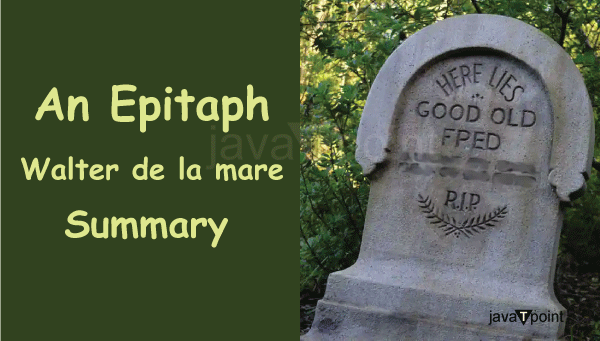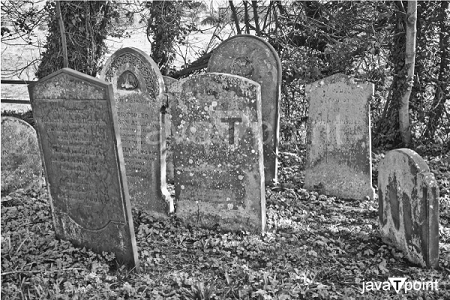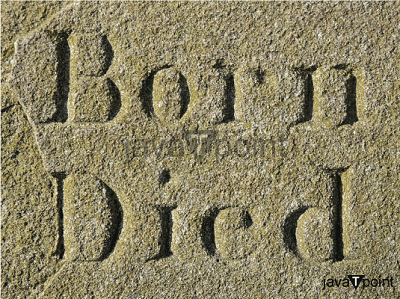An Epitaph SummaryIntroductionWalter de la Mare, a well-known English poet and author, is the author of the sorrowful and reflective poem "An Epitaph". The poem, published in 1921, examines themes of mortality, memory, and the fleeting essence of human existence. "An Epitaph" inspires readers to reflect on life's meaning and the certainty of death with its somber tone and evocative words. De la Mare creates a poignant memorial to the deceased through symbolism and vivid imagery, making an impression on those who read it. 
Poem's Themes and ToneWalter de la Mare's "An Epitaph" themes include demise, memory, the fleeting essence of existence, and the inevitable. As the poem considers the transient nature of human existence and serves as a reminder that everyone will eventually die, mortality is a major theme. The poem inspires reflection on the fleeting nature of existence and the shared experience of mortality. Another important element in the poem is remembrance. It causes readers to pause and consider how important it is to honour and remember the deceased. De la Mare urges readers to reflect on the deceased's influence on their lives and the enduring power of memory through the epitaph. The poem's picture of time passing and fleeting moments of existence highlights the ephemeral nature of life. It highlights the transient nature of human life and the necessity to value and love each fleeting moment. The poem has a quiet, melancholy, and contemplative tone. Readers are prompted to reflect and consider the serious questions of mortality by De la Mare's calm and contemplative writing style. The tone conveys a sense of melancholy, respect for the deceased, and awareness of the transience of existence. 
Symbolism and Imagery in "An Epitaph""An Epitaph" by Walter de la Mare uses symbolism and striking imagery to accentuate its themes and elicit strong emotions in the reader. 1. A Mossy StoneThe mossy stone represents aging and the deterioration that comes with it. It stands for the inevitable passing of all things and the slow loss of life's vibrancy. 2. A Rose AflameThe image of a burning rose represents life's passion and vibrant beauty. It contrasts the delicate nature of the rose with life's transience and transitoriness. 3. Earth's Dust"Earth's dust" refers to the physical remains left behind after death. It emphasizes the notion of human mortality and the idea of the body's eventual return to the ground. 4. A Moment's Glint, a Vanished TearThis lyric emphasizes the transient nature of life and the fleeting moments of joy or sadness that define our existence. "A moment's glint, a vanished tear" implies that life is made up of fleeting, glimmering events that vanish. 5. Gone as a Sigh that Goes UnmeasuredThe phrase "gone as a sigh that goes unmeasured" conjures up a full image of a sigh, representing life's transient and temporary essence. It illustrates how life ebbs and flows like an undetected breath with no set duration. 6. A Shadowy Face"A shadowy face" conjures images of memory's enigmatic and elusive qualities. It suggests the ethereal aspect of memory when we can still remember a person even when we can no longer recall their exact features. 7. A Wind Among the Poplar Trees"A wind among the poplar trees" - The idea of the wind among the poplar trees represents time and the fleeting essence of existence. It implies that life is continuously in motion and that forgetting or ignoring things is simple. These symbols and pictures evoke a vivid and moving atmosphere that encourages readers to think deeply about the important concepts of mortality and memory. Analysis of the Language and StructureThe impact and meaning of "An Epitaph" are influenced by its general format and language. 1. Structure"An Epitaph" has a four-stanza structure, with each stanza having four lines. The poem has a sense of harmony and balance because of the constant quatrain format. The structure's regularity reflects the cyclical nature of life and death. The poem's measured and the lines' regular lengths influence the reflective tone. 2. Languagei. Diction De la Mare uses precise word choice to convey a sense of reflection and thoughtfulness. Readers are given vivid mental images thanks to the language's sensory imagery. Words like "mossy," "aflame," and "glint" have a powerful visual and emotional impact and help the poem's topics stand out. ii. Alliteration The poem uses alliteration, which is the close usage of words with the same starting sounds. Examples include "mossy stone" and "vanished tear." Using this literary trick, the poem gains melody while highlighting the importance of specific lines and calling attention to them. iii. Metaphor The poetry uses analogies to explain difficult concepts. The rose's flame stands for life's intensity and splendor, and the wind among the poplars signifies time and the fleeting essence of life. These analogies enable a more thorough investigation of the poem's issues. iv. Repetition Using phrases and words repeatedly, such as "Gone as a sigh" and "Earth's dust," develops a rhythm and emphasizes particular points. It supports the concepts of the poem and fosters a contemplative environment. The whole format and vocabulary of "An Epitaph" combine to give readers a pleasant and reflective experience. The poem's themes of mortality, remembering, and the fleeting aspect of existence is strengthened by the carefully chosen words, poetic devices, and structured style. Important Takeaways and InterpretationsThe poem "An Epitaph" by Walter de la Mare offers numerous readings and contains several important messages: 1. Transience of LifeThe poem underlines the ephemeral and transitory character of human existence. The illustration of a rose on fire and a fleeting gleam reminds readers that life is fleeting and transient. This message encourages people to enjoy and appreciate every moment as it passes by while also emphasizing the importance of the here and now. 2. Consideration of MortalityThe poem encourages readers to consider the certainty of death seriously. The physical remains left behind after death are represented as moss-covered stone and earthen dust. Through this contemplation, the poem urges readers to reflect on their death and fosters a deeper appreciation of life's fragility and impermanence. 
3. Importance of Remembering"An Epitaph" emphasizes remembering and paying tribute to the deceased. The idea of memory as a lingering presence and the shadowy face emphasizes memory's ongoing ability to keep the deceased alive in our hearts. The poem makes the case that people might find comfort and a sense of connection with those who are no longer with them through remembering them. 4. Life's Purpose and MeaningThe poetry reflects life's meaning and purpose. People are inspired to ponder on their own lives and consider how they wish to use their limited time by realizing how fleeting life is. It causes readers to reflect on life's bigger questions and the legacy they leave behind. 5. Beauty in TransienceDespite the poem's depressing overtones, it also expresses a feeling of beauty in life's impermanence. Though life is short, it has a tremendous intensity and beauty that should be treasured, as suggested by images of a rose on fire and moments glinting. The poem's language and symbolism allow for individualized interpretations and personal meditation on mortality, remembering, and the fleeting nature of existence. 
IDeath from the Poet's PerspectiveIn "An Epitaph," Walter de la Mare presents a reflective and introspective viewpoint on passing away. The poet's awareness of the passing of all people and the temporary character of human existence is reflected in the poem. De la Mare's attitude toward death is gloomy but accepting. He acknowledges the fleeting nature of life by using images like the mossy stone and the Earth's dust as emblems. This viewpoint implies an awareness of death's universality and its unavoidable actuality. The poet's viewpoint highlights the necessity for people to acknowledge their mortality and reflect on the value of their life. De la Mare invites readers to consider each passing moment's significance and look for meaning and purpose in their lives by recognizing the fleeting nature of life. The poem also refers to the transience and brittleness of human endeavors and accomplishments. The idea that life is only a "moment's glint" or a "vanished tear" emphasizes the poet's belief that material success and worldly goals are temporary in light of death While the poem has a sorrowful tone, there is also a sense of acceptance and perhaps even a touch of beauty in the transitory aspect of existence. De la Mare contends that life has a great intensity and capacity for beauty despite its fleetingness. The image of a burning rose represents the fire and emotion that can be felt in the short amount of time each person has. 
Overall, "An Epitaph" by de la Mare emphasizes the inevitable nature of death and the fleeting nature of human existence. It challenges readers to reflect on the meaning of life, value the here and now, and discover beauty in the transience of our earthly journey. Thoughts about Life and DeathWalter de la Mare's "An Epitaph" presents significant musings on life and death, provoking readers to think about the more profound facets of human existence. The poem inspires meditation and challenges readers to face their mortality, inspiring a variety of observations on life and death: 1. The Transitory Nature of LifeThe poem serves as a reminder of the transitory nature of life, comparing it to a "moment's glint" or a "vanished tear." It causes us to pause and consider how brief our time on Earth is and how crucial it is to appreciate the present fully. 2. The Fragility of Human ExistenceDe la Mare's depiction of a moss-covered stone and Earth's dust emphasizes how short life is. It emphasizes our existence's impermanence and transitory character by reminding us that all physical manifestations eventually return to the ground. 3. The Importance of RememberingThe poem highlights the value of remembering and the influence of memory. Readers are urged to contemplate the influence and legacy those who have died away leave behind by considering the deceased's spectral visage and enduring presence. It encourages reflection on how we want to be remembered and the significance of keeping loved ones' memories alive. 4. The Meaning of LifeThe poem's reflective tone invites readers to reflect on the meaning and significance of their own lives. It prompts consideration of our impact on the world, the importance of our deeds and experiences, and the best use of our brief lives. It invites us to consider what matters and what gives our lives fulfillment and meaning. 5. Beauty in ImpermanenceDespite its dark subject, the poem shows that life's impermanence can yet have its share of beauty. The image of a burning rose symbolizes the intensity and beauty we can encounter in our brief time. It encourages us to treasure and value the fleeting moments of joy and beauty that make our lives more fulfilling. 6. The Universal Experience of MortalityThe poem serves as a reminder that everyone experiences mortality, and death is a universal event everyone can relate to. We are all connected by the inevitable nature of death, regardless of our backgrounds, accomplishments, or status. This contemplation promotes a sense of shared humanity and can help people comprehend and empathize. 7. The Temporary Nature of Human Achievements"An Epitaph" makes us think about our fleeting achievements and material pursuits. The poem points out that material goods and outward success are unimportant in the face of death. It motivates us to put more of an emphasis on experiences and values that promote our inner development and fulfillment. 8. The Cycle of Life and DeathThe images and symbolism in the poem convey a feeling of the cyclical nature of life and death. The mossy stone and Earth's dust symbolize the possibility of fresh beginnings and the continuation of the life cycle, just as they do the end of one life. This thought encourages reflection on the continuity of existence and the interdependence of all living things. 9. The Impermanence of Emotional StatesThe poem points out that even our deepest feelings and tragedies are fleeting and transient, using language like "vanished tear" and "gone as a sigh." This contemplation emphasizes the value of living in the now and finding inner peace in the face of life's impermanence by reminding us that both happiness and grief are transient. 10. The Paradox of Mortality and Legacy"An Epitaph" addresses the paradox of mortality and legacy. It ponders the paradoxical nature of mortality as we work to leave a lasting impression while also realizing how fleeting life is. This thought encourages consideration of our aspirations for the world and how we might make a significant and long-lasting difference. The topics of life and death given in Walter de la Mare's "An Epitaph" are further explored and thought about in depth by these additional comments. "An Epitaph" challenges readers to acknowledge their mortality, cherish the present, think about the legacy they leave behind, and discover beauty and significance despite the fleeting nature of human existence through its thoughts on life and death. ConclusionAs a lyrical remembrance of the dead, "An Epitaph" by Walter de la Mare offers significant insights into life, death, and the eternal power of memory. The poem challenges readers to face their mortality and consider the transitory essence of human existence through its skilfully chosen language, vivid imagery, and reflective tone.
Next TopicA Retrieved Reformation Summary
|
 For Videos Join Our Youtube Channel: Join Now
For Videos Join Our Youtube Channel: Join Now
Feedback
- Send your Feedback to [email protected]
Help Others, Please Share









